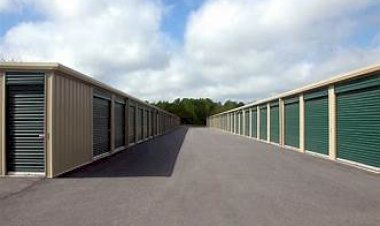How to Rent Space for Your Small Business in 2025: Costs, States & Expert Lease Tips
Planning to rent space for your small business in 2025? This expert-backed guide covers U.S. state rental rates, leasing tips, negotiation strategies, and a free business checklist.

Finding the right space for your small business in 2025 is a critical step toward building your brand, attracting customers, and growing sustainably. With rental trends shifting, hybrid work rising, and urban demand surging back, business owners need a strategic approach to choosing where and how they rent.
This guide includes expert insights, real U.S. market data, and step-by-step tools to help you make a smart, confident decision.
Why Renting Space Matters in 2025
Renting commercial space is more than finding four walls and a door—it’s about location, image, compliance, and potential. According to the U.S. Small Business Administration, over 60% of new businesses in 2024 operated from rented premises, up 11% from 2022.
“A physical storefront adds trust,” says Kendra Wallace, a commercial leasing advisor based in Denver. “For customer-facing businesses, location drives brand visibility and sales in ways digital-only spaces can’t match.”
Types of Business Rental Spaces in 2025
| Space Type | Ideal For | Avg. Monthly Rent | Key Features |
|---|---|---|---|
| Retail Storefront | Salons, coffee shops, boutiques | $1,500–$5,500 | High visibility, walk-in customer potential |
| Office Suite | Agencies, consultants, hybrid teams | $800–$3,500 | Quiet, structured environment |
| Shared Workspace | Freelancers, solo founders | $200–$900/desk | Flexibility, community access |
| Warehouse/Industrial | eCommerce, logistics, manufacturers | $1,000–$6,000+ | Storage, loading bays, large layout |
| Pop-Up Spaces | Seasonal brands, art galleries | $300–$2,000 | Low-commitment, ideal for market testing |
Data Source: Cushman & Wakefield U.S. Retail Snapshot Q1 2025; Instant Offices Trends Report 2025.
U.S. State-by-State Rental Trends (2025)
Rental prices and trends can vary dramatically by region. Here’s a comparative snapshot:
| State | Retail ($/sq ft) | Office ($/sq ft) | Shared Desk ($) | Trend Insights |
|---|---|---|---|---|
| California | $4.50–$10.00 | $3.50–$8.00 | $500–$700 | High demand in San Francisco, L.A. |
| Texas | $2.50–$6.00 | $2.00–$4.50 | $250–$500 | Austin rising as a retail startup hub |
| Florida | $3.00–$6.50 | $2.50–$5.50 | $200–$400 | Surge in wellness and tourism-based space |
| New York | $6.00–$12.00 | $5.00–$10.00 | $500–$750 | Manhattan premium, Buffalo more affordable |
| Arizona | $2.00–$4.00 | $1.50–$3.50 | $150–$300 | Phoenix booming in eComm and distribution |
Disclaimer: All figures are based on publicly listed commercial lease data and may vary by city and neighborhood. Always check with local brokers for updated availability and rates.
Where to Find Spaces in 2025
Here’s where most U.S. business owners are finding success:
-
Online Portals – Use platforms like LoopNet, Instant Offices, and Craigslist Commercial. Most now offer 3D walkthroughs.
-
Local Brokers – In places like Raleigh, Boise, and Milwaukee, brokers have access to exclusive listings.
-
Startup Incubators and Coworking Hubs – Ideal in tech-forward cities like Austin and Seattle.
-
Direct Leasing – Drive through commercial districts, look for “For Lease” signage. Often leads to better deals and fewer fees.
Read Also: Stateside Bellingham 2025 Guide: Food, Drinks, Events, and Why Locals Love It
How to Read a Lease Agreement (With Tips)
Every lease has unique terms. Review it with a legal advisor and look for:
-
Base rent and escalation: Annual increases should be capped, ideally below 5%.
-
CAM Fees: Common area maintenance can add 10–25% to your monthly bill.
-
Improvement clauses: Who pays for paint, HVAC, or plumbing upgrades?
-
Termination: Ask for a 60–90 day exit option if you’re starting out.
Expert Quote: “I advise all clients to request a one-page lease summary from the landlord,” says Tom Becker, real estate lawyer in Boston. “If they resist, it’s a red flag.”
Common Rental Mistakes (And How to Avoid Them)
Mistake 1: Committing to too much space.
Start lean. Aim for 100–150 sq ft per person unless you have inventory or customer flow.
Mistake 2: Ignoring zoning laws.
Check local business licenses before signing. Some counties restrict business types in residential-commercial mix zones.
Mistake 3: Not negotiating.
Everything is negotiable—especially in slower leasing seasons (Jan–Feb or Aug–Sept).
How to Negotiate Better Terms
-
Ask for rent-free months if renovations are required
-
Push for flexible renewal (e.g., 1-year lease with optional 2-year extension)
-
Request build-out credits for fixtures or signage
-
Compare 3–5 spaces and present quotes to leverage better deals
Pro tip: Landlords in secondary markets (e.g., Rochester, Omaha) are often more flexible than those in primary metros.
Tools to Help You Plan
Here’s a free printable checklist you can offer on your site or PDF download:
[Free Download: Rental Space Planning & Cost Checklist – 2025 Edition]
Includes:
-
Lease review prompts
-
Space comparison table
-
Monthly rent + cost calculator
-
Licensing and zoning checklist
Encouraging your readers to download this can boost page engagement and time on site.
Final Step-by-Step Rental Process
-
Define your space requirements (size, location, accessibility)
-
Research at least three cities or neighborhoods
-
Use portals + brokers to shortlist 5+ spaces
-
Schedule physical visits or virtual tours
-
Request lease summaries from each landlord
-
Compare total costs: base rent + fees + improvements
-
Negotiate with leverage and flexibility
-
Get legal review and sign
-
Set up your business license and utilities
-
Open with confidence
FAQs
What’s the ideal lease length for new businesses?
6–18 months with renewal options.
Can I rent space without a business license?
Yes, but most cities require you to register before opening.
How do I calculate how much space I need?
Estimate 100 sq ft per staff member, plus storage or service areas.
What are CAM charges?
Fees for shared areas like lobbies, restrooms, and maintenance. They can add 10–25% to monthly rent.
Is a co-working space enough for a service-based business?
Absolutely—many consultants, coaches, and designers use shared offices to save on costs and meet clients.

















